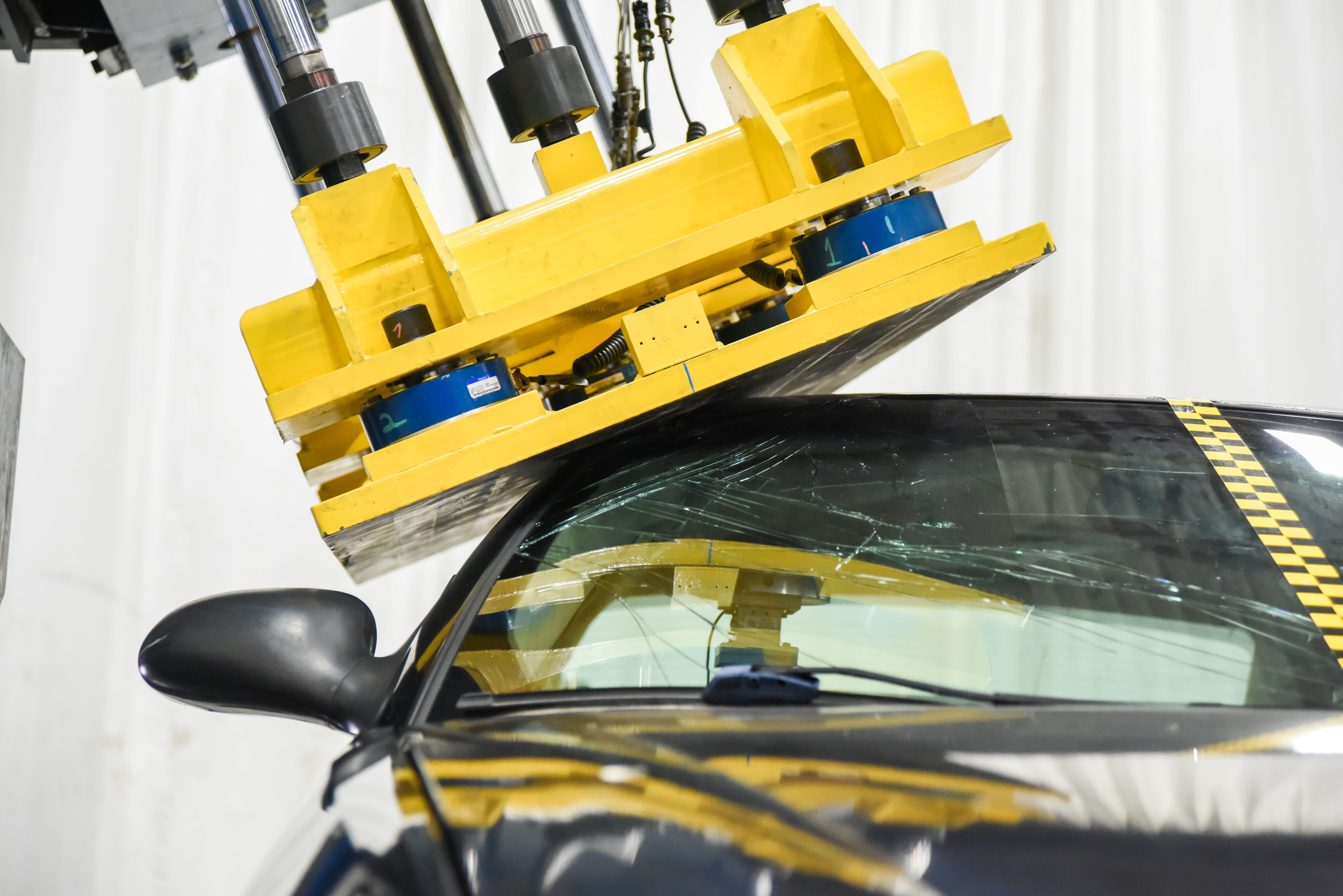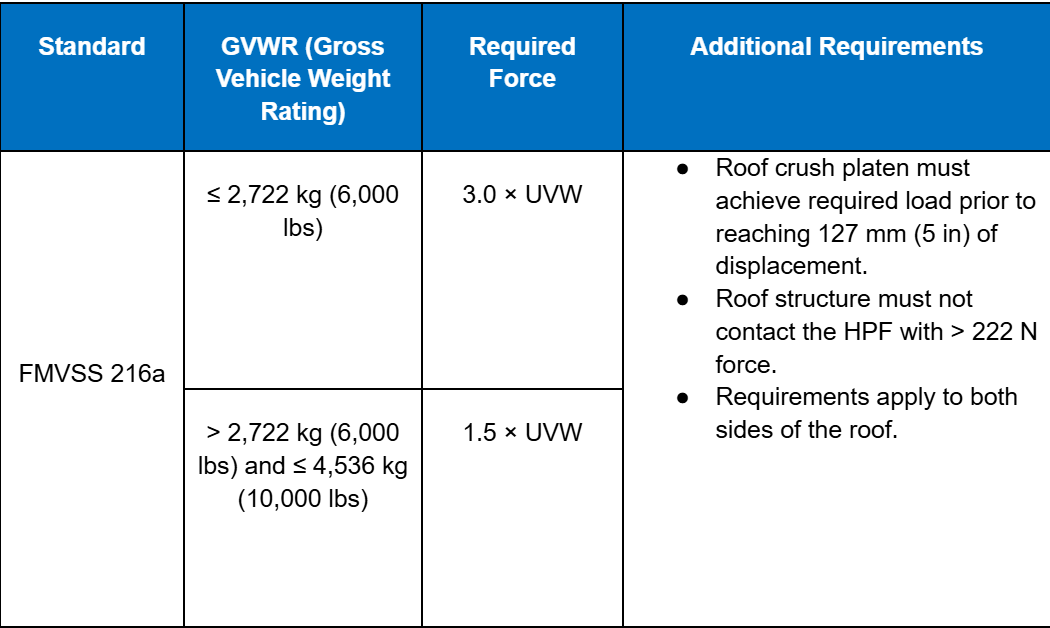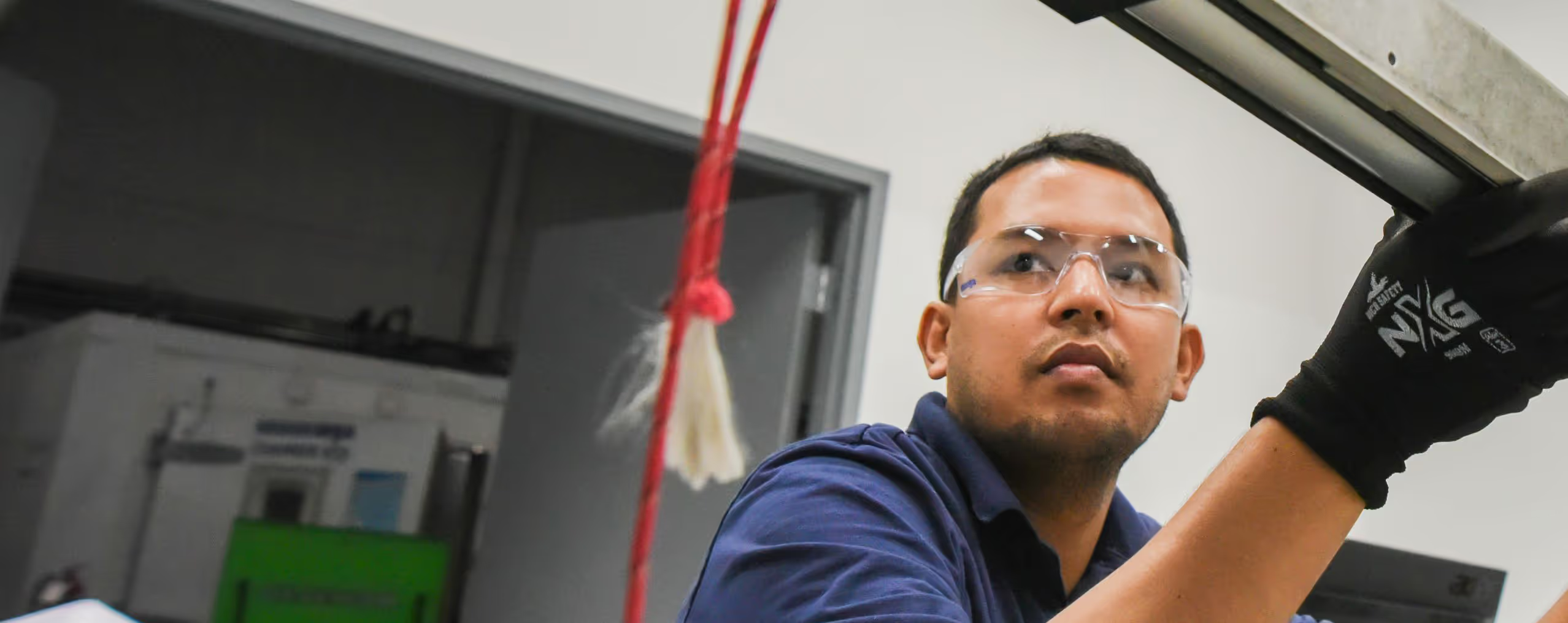Understanding FMVSS 216a: The Importance of Roof Crush Testing in Vehicle Safety
Oct 9, 2025

The automotive industry continues to advance in safety while shifting toward vehicle electrification. Battery electric vehicles (BEVs) often weigh significantly more than comparable internal combustion engine vehicles (ICEs) due to their heavy battery packs. This increased mass creates higher forces during rollover crashes, making it more challenging to meet federal safety standards. FMVSS 216a, which sets the Roof Crush Resistance standards, becomes critical as stronger roofs are required to protect occupants in the case of rollover accidents.
During a rollover, a vehicle’s roof structure can strike the ground. Studies have shown that roof intrusion is a major cause of injury in rollovers, especially in pickups and SUVs, which led to the creation of FMVSS 216 Roof Crush Resistance to address these risks. Compliance with this standard was first required on September 1, 1973. The standard evolved over the years with the release of FMVSS 216a in 2009.
What is FMVSS 216a?
FMVSS 216a (Roof Crush Resistance) is a regulation defined by the National Highway Traffic Safety Administration (NHTSA). It sets roof strength requirements for most passenger vehicles sold in the U.S. market. This regulation is an extension of the original FMVSS 216 rule, updated to reflect changes in vehicle size, speed, and to include a broader category of vehicles, such as multipurpose passenger vehicles. The test requirements are based on the unloaded vehicle weight (UVW) as well as head contact area defined by a head form positioning device (HPF) positioned in the front occupant areas. Compliance with FMVSS 216a is required for all vehicles manufactured on or after September 1, 2015.

Test Requirements

Experience in Roof Crush Testing
MGA brings more than 40 years of hands-on expertise in Roof Crush testing and compliance, backed by over two decades of successfully holding the NHTSA FMVSS 216a testing contract. Over the years, our team has carried out Roof Crush testing for nearly every major automotive manufacturer. With experience spanning passenger cars, SUVs, commercial vans, and off-road vehicles, we are equipped to meet the diverse needs of the industry. MGA routinely manages multiple test programs simultaneously, delivering fast turnaround times without compromising on quality. To further support precision and consistency, we developed a specialized Roof Crush system specifically designed for FMVSS 216a compliance testing.

How MGA Supports FMVSS 216a
MGA’s Roof Crush System is trusted and utilized by several leading automotive OEMs in North America, Europe, and Asia. The system is also used by the Insurance Institute for Highway Safety (IIHS).
Key benefits of MGA’s Roof Crush System include:
- Full compliance with FMVSS 216a test procedures
- Customizable to fit a wide range of vehicle platforms
- Compatible with data acquisition systems and force-displacement monitoring
- Backed by MGA’s engineering support and technical training

Whether you're needing external support with performing Roof Crush Resistance testing or scaling up internal vehicle programs and seeking more control over development timelines, MGA is here to provide support. Contact MGA to learn more about the FMVSS 216a standard.

Ready to Get Started?
Let's discuss your testing needs and how MGA can help. Our team is ready to provide the expertise and solutions you're looking for.
